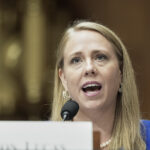After the Northridge earthquake rumbled through California on Jan. 17, 1994, destroying or damaging more than 200,000 homes, injuring 12,000 people and killing 60, and damaging or leaving uninhabitable 114,000 buildings, many insurers refused to write both homeowners and quake coverage.
This prompted the formation of the California Earthquake Authority (CEA). In 1996, the state Legislature established the privately financed, publicly managed entity. Now, five years later, the world’s largest earthquake insurer is busy charting its long-term direction.
“During our first couple of years we were more focused on a lot of operational start-up concerns, but now we have matured as an organization,” said Mark Leonard, legislative and public affairs manager for the CEA. “We restored the homeowners market and decided it was time to take the next step as an organization.”
The five-year strategic plan both establishes a mission and defines the CEA’s goals. According to Leonard, the major goals of the organization are policy growth, adding new insurers as CEA members and expanding the mitigation program.
Currently, the 15 participating companies include: Allstate, Armed Forces Insurance Exchange, Automobile Club of Southern California, California FAIR Plan, CNA, CSAA, Farmers Group, Golden Eagle, GuideOne Insurance, Liberty Mutual, Merastar, Mercury, Prudential, State Farm and USAA.
According to Leonard, the CEA makes a lot of competitive sense for a company who wants to come back into, or enter for the first time, the California homeowners market. “Because of the way we are structured, an existing company would have a capital contribution that they would have to pay that would cover their existing earthquake
policies that were being transferred into the authority,” he said. “If you are a new
company…you don’t have any earthquake market share right now, so it’s less expensive to get in. And now you can expand your homeowners writings and not have to worry as much about the earthquake exposure, because you’re not paying first dollar on those policies that are being sold.”
‘Mini-policy’ receives a warm welcome
In December 1998, the CEA governing board approved supplemental, or “wrap-around” policies. “This is the mini-policy-the policy that we sell as well as about 96 percent of the market [sells]. It has a 15 percent deductible; $5,000 in contents coverage; and $1,500 in additional living expenses,” Leonard said. “There was talk of companies offering additional coverages above and beyond that for a number of reasons that never really materialized on a wide scale.”
Clearly, supplemental coverage is catching on. Since its introduction, roughly 54,000 supplemental policies have been sold. “They were selling at a rate of about 5,000 a month for a few months,” Leonard said. “You can mix and match, creating about nine different options, so it’s been a very popular product.”
While the base-limits CEA policy carries a 15 percent deductible based on the
home’s insured value, homeowners can lower the deductible to 10 percent with the supplemental coverage. “And for all policyholders-including condos and renters-you can increase the contents up to $100,000 from the current $5,000, and increase the
emergency living expenses from $1,500 all the way up to $15,000,” Leonard explained.
Altogether, the CEA has close to 910,000 policyholders. “That is written as of about a week or two ago,” Leonard said. “And that 910,000 doesn’t included the supplementals.” The policies written represent roughly $160 billion in exposure.
Hoping to reverse the trend
Historically, many California homeowners drop the EQ coverage after two years if there have been no major rumblings. In an effort to improve retention as well as to get more Californians to purchase earthquake insurance, the CEA is preparing to launch a marketing campaign.
“We’ve been doing some consumer research and it’s showing some very interesting things,” Leonard said. The findings show that there are basically two types of people in California-those who are risk-adverse and those who are not. “And the risk-adverse people have a number of characteristics,” Leonard said. “They don’t carry credit card balances month to month, they try to pay cash for everything, they buy more than the minimum amounts for their auto policies, and they buy earthquake insurance.”
Leonard feels that a lot of critics have tried to place the blame on the price or the coverage of the mini-policy as to what is causing people not to buy earthquake coverage. “But that’s not what we’re finding at all,” he said. “Even in the lowest rated areas of the state, these people are convinced that they’re not going to be victims of an earthquake. They say things like, ‘we already had our earthquake,’ or, ‘I’m not going to be home when it happens.’ So it’s very interesting. It’s a very different market than any other insurance market in California.”
The CEA’s goal is to have its marketing effort result in increased sales as opposed to waiting for the next damaging quake to rumble through the state. “Earthquake insurance has never really been marketed in California… on a wide scale basis before and that’s one of our challenges,” Leonard said.
With an event like the Northridge quake, the market was affected on a very large scale. “Statewide, sales spiked in the year following Northridge, and we see it now,” Leonard said. “We had a series of small quakes in the Redding area around Thanksgiving two years ago, and our policies doubled over the next year in that area.”
For now, the CEA is trying to answer one very important question: Can marketing generate quake policy sales?
The future at your fingertips
In March, the CEA launched a variety of new services-including a new Web site and hotline-that will allow consumers as well as agents to more easily and more conveniently obtain information on earthquake insurance and earthquake preparedness.
By visiting the Web site, www.earthquakeauthority.com, or calling the hotline, (877) 797-4300, agents can obtain information about the CEA and its products.
Topics Catastrophe California Homeowners
Was this article valuable?
Here are more articles you may enjoy.


 Brown & Brown Files Suit Over Alleged Howden Poaching of 200+ Employees
Brown & Brown Files Suit Over Alleged Howden Poaching of 200+ Employees  Grand Jury Declines to Indict Man in Fatal Shooting at Kentucky State University
Grand Jury Declines to Indict Man in Fatal Shooting at Kentucky State University  Head of EEOC Urges White Men to Report Discrimination
Head of EEOC Urges White Men to Report Discrimination  US P/C Posts $35B YTD Underwriting Gain; By-Line Premium Growth Revealed
US P/C Posts $35B YTD Underwriting Gain; By-Line Premium Growth Revealed 


